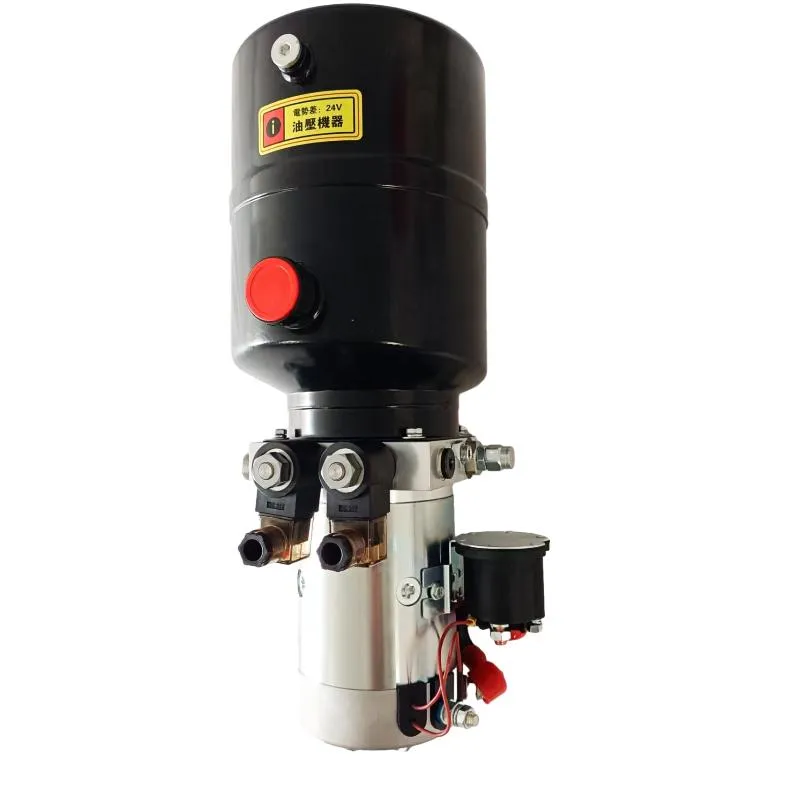Nov . 14, 2024 23:26 Back to list
forklift hydraulic cylinder product
Understanding Forklift Hydraulic Cylinders Essential Components for Material Handling
Forklifts are indispensable machines in material handling, warehouse management, and various industrial applications. At the heart of these forklifts is a crucial component known as the hydraulic cylinder. Hydraulic cylinders are vital for converting hydraulic energy into mechanical force, enabling the lifting and lowering operations that make forklifts such effective tools. This article delves into the functionality, types, maintenance, and significance of forklift hydraulic cylinders.
What is a Hydraulic Cylinder?
A hydraulic cylinder is a mechanical actuator that converts hydraulic pressure into linear motion. It typically comprises a cylindrical barrel, a piston, and two end caps. When hydraulic fluid is pumped into the cylinder, it creates pressure that forces the piston to move. This linear motion is then used to raise or lower the forklift's forks, allowing for the easy handling of heavy loads.
How Forklift Hydraulic Cylinders Work
The operation of hydraulic cylinders in forklifts relies on Pascal's principle, which states that pressure applied to a confined fluid is transmitted undiminished in all directions. In practical terms, when the forklift operator activates the lift mechanism, hydraulic fluid from the hydraulic pump is directed into the cylinder. This fluid pushes the piston upwards, raising the fork assembly. Conversely, when the operator lowers the load, the hydraulic fluid exits the cylinder, allowing the piston to descend.
Types of Hydraulic Cylinders
There are various types of hydraulic cylinders employed in forklifts, with the most common ones being
1. Single-acting Cylinders These cylinders only operate in one direction. They use hydraulic pressure to extend the piston while a spring or gravity returns it to its original position. Single-acting cylinders are simpler and often used for applications where movement is primarily upward.
2. Double-acting Cylinders These cylinders can move in both directions, allowing for controlled upward and downward motion. They are more versatile than single-acting cylinders and are frequently used in forklift applications where precise control is needed.
3. Telescopic Cylinders These specialized cylinders consist of multiple nested tubes, allowing for a longer stroke in a shorter retracted length. They are particularly beneficial in forklifts designed for lifting higher loads or operating in confined spaces.
Importance of Hydraulic Cylinders in Forklifts
forklift hydraulic cylinder product

The significance of hydraulic cylinders in forklifts cannot be overstated
. They are pivotal in ensuring efficient and safe operations, contributing to the following benefits- Enhanced Lifting Capacity Hydraulic cylinders enable forklifts to lift substantial weights, making them essential for warehouses and construction sites where heavy lifting is frequent.
- Precision and Control The hydraulic system offers operators fine control over movements, ensuring that loads can be lifted, moved, and lowered with precision.
- Durability and Reliability Hydraulic cylinders are designed to withstand extreme pressures and heavy use, making them reliable for daily operations in demanding environments.
- Reduced Labor Costs By automating the lifting process, hydraulic cylinders reduce the physical strain on workers, decreasing labor costs and improving overall safety.
Maintenance of Forklift Hydraulic Cylinders
To ensure optimal performance and longevity of hydraulic cylinders, regular maintenance is essential. Here are some key maintenance tips
- Regular Inspections Check for any signs of wear, leaks, or damage. Early detection can prevent costly repairs and downtime. - Fluid Checks Ensure that the hydraulic fluid levels are adequate and that the fluid is clean. Contaminated fluid can cause system failure.
- Seal Maintenance Inspect seals regularly for signs of degradation. Worn seals can lead to leaks, affecting the cylinder's efficiency.
- Professional Servicing Engage qualified technicians for comprehensive inspections and repairs. Professional maintenance helps ensure that the hydraulic system operates smoothly and safely.
Conclusion
In conclusion, forklift hydraulic cylinders are critical components that enhance the functionality and efficiency of forklifts in various applications. Understanding their operation, types, and maintenance can lead to improved safety and productivity in industrial settings. As technology continues to advance, we can expect innovations in hydraulic systems that further enhance the capability of forklifts, making them even more effective tools in the modern workplace. Proper care and maintenance will help ensure that these vital systems operate successfully, keeping the wheels of industry turning smoothly.
-
Fork Lift Power Units - Hebei Shenghan | Efficiency, Reliability
NewsJul.13,2025
-
1.5-Ton Turbocharged Cylinder-Hebei Shenghan|Hydraulic Solution,Energy Efficiency
NewsJul.13,2025
-
Auto Hoist Power Units-Hebei Shenghan|Efficiency&Industrial Lifting
NewsJul.13,2025
-
Double Acting Power Units-Hebei Shenghan|Hydraulic Solutions,Industrial Efficiency
NewsJul.13,2025
-
1.5 Ton Lifting Cylinder 70/82-40-290-535 - High-Performance Hydraulic Solution | Hebei Shenghan
NewsJul.13,2025
-
Fork Lift Power Units - Hebei Shenghan | Efficiency&Reliability
NewsJul.13,2025
